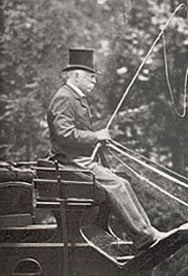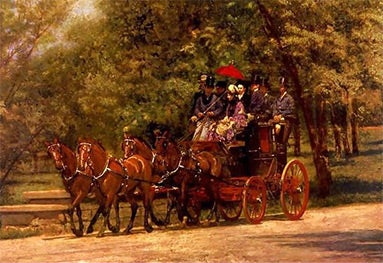Fairman Rogers (November 15, 1833 – August 22, 1900), born in Philadelphia, Pennsylvania, was an American civil engineer, educator, and philanthropist. He graduated from the University of Pennsylvania in 1853 and taught civil engineering there from 1855 to 1871. As an undergraduate, Rogers had been a founding member of its Zeta Psi Fraternity, Sigma Chapter (1850); as a professor, he helped found Penn’s Department of Mines, Arts and Manufactures (1855); and as a University Trustee (1871 – 86), Rogers joined with others to encourage the University to establish the School of Veterinary Medicine.


At the youthful age of 24, Rogers was elected to the American Philosophical Society. He was also a member of the Academy of Natural Sciences as well as a charter member of the National Academy of Sciences. Rogers served in the Union Cavalry during the American Civil War, where he worked on the engineering staffs of General John F. Reynolds and General William F. Smith. As a volunteer officer in the United States Army Corps of Engineers, he completed an 1862 survey of the Potomac River. He fought at Antietam and Gettysburg as a member of the First Troop Philadelphia City Cavalry, and was elected its captain after the war. He helped create what is now known as the Union League of Philadelphia. In 1877 he published Terrestrial Magnetism and the Magnetism of Iron Ships (revised 1883).
Rogers served as a director of the Pennsylvania Academy of the Fine Arts (PAFA), and in 1871 he ran the competition to design a new building, which was to function both as a museum and as an art school. The young firm of Furness & Hewitt won the competetion. It deserves mention that Rogers’s sister, Helen Kate, was married to the Shakespearean scholar Horace Howard Furness, brother of the PAFA-commission-winning architect Frank Furness. The building was completed in 1876 and remains to this day a fixture on North Broad Street. Frank Furness later designed "Fairholme" (1874 – 75, now altered), Rogers’s summer cottage in Newport, Rhode Island. Rogers also had a country house in Wallingford, Pennsylvania, as well as a Philadelphia townhouse on Rittenhouse Square that Furness altered for him (1871), and later altered for railroad magnate Alexander J. Cassatt (1888).
Rogers served as chair of PAFA’s Committee on Instruction from 1878 to 1883 and was instrumental in changing the Academy’s policy not only to admit women under the same conditions as men, but also to offer them the same opportunities. He shared an interest in photography with his contemporaries Thomas Eakins and the animal-locomotion photographer Eadweard Muybridge. He recruited Eakins, who was then considered a controversial artist, to teach at the school and commissioned an important painting from him. The first painting to depict horses in motion, Eakins’The Fairman Rogers Four-in-Hand (1879-80), originally titled May Morning in the Park, is based on Muybridge’s photographs of horses in motion. The painting demonstrates a technique Rogers mastered for driving a carriage drawn by four horses while holding the reins in one hand. It shows Rogers, his wife Rebecca Gilpin Rogers, and friends driving through Philadelphia's Fairmount Park.

In 1882 Rogers promoted Eakins to director of PAFA's art school and in 1883 invited Muybridge to lecture at PAFA. This led to Muybridge's move from California to Philadelphia, where he continued his research at the University of Pennsylvania's Veterinary School. Rogers was an avid coaching enthusiast, founder of the Philadelphia Coaching Club and author of what is still the definitive guide to the sport, A Manual of Coaching (Philadelphia, 1900), published the year of his death.
Rogers and his wife had no children. They moved to Paris around 1890 and Rogers died in Vienna in August 1900. He is buried in Philadelphia’s Laurel Hill Cemetery. Horace Howard Furness wrote a biographical memoir of his brother-in-law: F. R. [Fairman Rogers] 1833-1900 (Philadelphia, 1903), and in November 1906, Provost Edgar Fahs Smith read before the National Academy of Sciences his own Biographical Memoir of Fairman Rogers, 1833-1900, which was published the following year.


